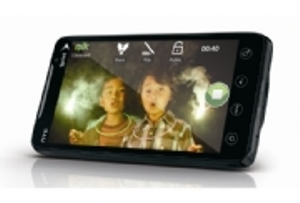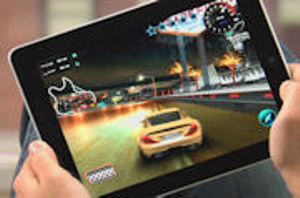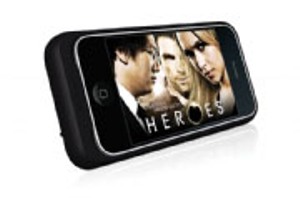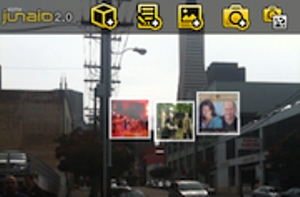Imagine sitting on the grass in a shady park, watching flawless high-definition television on your connected tablet. Imagine pausing the program and switching over to a video call from your mother.
Wireless carriers will be trying to capture your imagination and your dollars with rosy scenarios like this one, tempting you with cool new applications–or better old ones–that fully exploit the 10X speed increases promised by fourth-generation (4G) wireless networks.
Already, carriers are extolling what they believe will be 4G’s killer apps, but at this point it’s a guessing game–and consumers will ultimately decide the winners. That said, it isn’t too early to make educated guesses about where those killer apps might surface–and here are ours.
1. Live Mobile Video
The Qik live video app running on the forthcoming HTC EVO 4G phone from Sprint.

Today, most mobile phones come with advanced cameras that can even shoot video, so it’s no surprise that the next step in this area is to link video apps to mobile networks.
In the earliest stages, advances may be as simple as using an Apple iPhone or a Google Android-based device to upload a cute clip of your kid to YouTube. But already, specialized application providers like Qik are offering services that support live streaming video from your mobile device to the Internet, theoretically transforming anyone carrying a smartphone into an instant on-the-spot news reporter.
Though such services may not appeal to everyone, professional broadcast teams are sure to move to 4G services when they become available.
Theoretically, at least, the WiMa and Long Term Evolution (LTE) 4G networks now being built will be able to handle broadcast-quality data loads over much cheaper, faster, and more mobile connections than satellite trucks.
One developer, Nomad Innovations, offers a WiMax-based modem that attaches to the back of a professional video camera, obviating the need for satellite connectivity in the field.
Forward-facing cameras in products like Samsung’s Mondi i mobile Internet device (MID) and the forthcoming HTC EVO 4G herald a boom in personal, on-the-go videoconferencing over services like Skype or Oovoo.
2. Mobile/Portable Gaming

We expect gamers to develop a strong craving for the speed and mobility of 4G service. In the long term, online gamers may be the biggest users of portable 4G Wi-Fi routers and Clearwire’s Clear Spot, which receive swift 4G signals and then transmit them to gaming devices via a small Wi-Fi network.
Since most gaming platforms have Wi-Fi connectivity built in, you can easily use the portable modem to share a 4G connection with five to eight different devices (depending on which modem you buy).
Using a portable “pocket spot” router to support ad hoc gaming parties over services such as Microsoft’s Xbox Live is an obvious way to take advantage of 4G networks. Likewise, the improved latency of 4G networks seems tailor-made for online gaming, where faster network response times can mean the difference between (virtual) life and death.
3. Cloud-Based Apps

Expanded 4G network use will make cloud computing–working with data and apps that are stored online–even more appealing than it is today, especially for enterprise professionals who need access to transaction-heavy applications that reside mainly on the Internet, such as Salesforce.com’s CRM platform and various real-time collaboration platforms.
If the broadband pipe from the cloud to the mobile device gets ten times fatter, cloud services will become considerably more reliable, functional, and secure for mobile users.
Though you may not think of them as such, Hulu and Netflix are cloud-based video services.
And though they may not call it “cloud computing,” consumers of all types are likely to make heavy use of faster mobile connections to stream full-length television shows and movies from sites like Hulu.com and Netflix.com.
Some college campuses are already exploring ways to combine 4G networks with portable computers or tablets like Apple’s iPad to replace physical textbooks.
Magazine and newspaper publishers hope that 4G connections and new product designs (like the iPad) will allow them to charge for premium content, enriched with elements such as video and photos, that will require a faster broadband connection than the 3G link used to upload digital books to e-book readers like Amazon’s Kindle.
4. Navigation With Augmented Reality
Navigation applications, which are typically married to expandable/zoomable maps such as Google Maps, are among the most popular downloads for 3G devices like the iPhone.

With the promise of greater bandwidth on 4G networks, navigation application providers are already exploring the idea of “augmented reality,” in which a device will be able to present real-time visual data using a phone’s live camera and its positioning or GPS information.
End-user benefits range from modest–for example, the ability to point your phone down the street to see where the closest Starbucks is–to extremely powerful.
As an example of the latter, imagine 4G-enabled helmets that can project a building infrastructure diagram onto a firefighter’s visor to help them make their way through a smoke-filled building.
Augmented-reality navigation applications will probably grow more popular and more widespread as in-car systems such as Ford’s Sync and General Motors’ OnStar permit integration between such apps and improved displays, antennas, GPS systems, and power plants inside vehicles.
5. Emergency Response and Telemedicine
Even before the FCC breaks ground on its proposed separate 4G network for first responders, you can expect local police departments, fire departments, and medical institutions to invest heavily in 4G-based systems aimed at providing better, faster, and less expensive medical and emergency care.
Networking giant Cisco is already developing special gear and services for health-care operations, taking advantage of 4G networks’ ability to transfer large files (like X-rays) quickly, and to provide interactive video for remote physician monitoring and direction.
The expected proliferation (and subsequent cost reduction) for 4G deployments should also make it easier for rural communities to set up remote health centers, where doctors could “visit” patients via teleconference-like facilities.
Ongoing government grants and stimulus funds should help pay for such civic-minded applications of 4G technology.
Paul Kapustka is editor and founder of Sidecut Reports, an independent research firm that specializes in wireless technologies.




